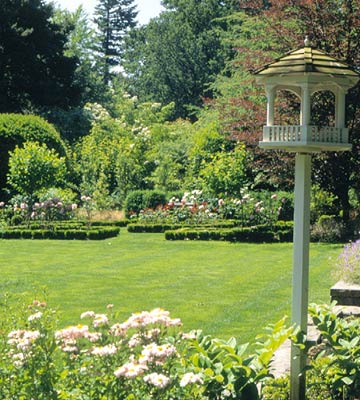






Almost all lawn grasses are classified as either "cool season" (meaning they do better in the North) or "warm season" (better adapted to southern gardens). The information in this article will help you select varieties that will grow well in your climate and under the conditions present in your yard.
Before you make your final decision, check with your local Cooperative Extension Service or local nurseries to find out about varieties adapted to your area.
continue reading belowCool-season grasses are generally adapted to northern climates, where they grow vigorously in spring and fall and may turn brown in very hot summers. They are often sold as a blend of several varieties of the same species, such as several varieties of Kentucky bluegrass, or as a mixture of two or more different species such as Kentucky bluegrass and fine fescue. Growing blends or mixtures is a good idea -- if one doesn't grow well or is destroyed by disease, chances are that the others will take over and flourish.
The most common cool-season grasses include fine fescue, Kentucky bluegrass, perennial ryegrass, and tall fescue. The new varieties of Kentucky bluegrass, unlike the old standards, are quite disease-resistant, keep their fine-textured looks without a lot of feeding, and have some drought tolerance. Fine fescue includes several grasses -- chewings fescue, hard fescue, and creeping red fescue -- that are often mixed with Kentucky bluegrass as they thrive in shade and drought. Perennial ryegrass is a main component of cool-season grass mixes. It germinates quickly and wears well.
Warm-season grasses are adapted to the South, growing best in hot weather, and going brown and dormant when temperatures dip to freezing. Zoysia is the most winter hardy of the southern grasses and is sometimes grown up to Zone 7. It stays brown all winter in cold-winter areas, however, and is slow to green up in spring. It's a dense grass that's somewhat tolerant of shade and grows best in the upper South. Bermuda grass is suited to Florida and the Gulf Coast and thrives when it gets abundant water. It wears well, staying green longer than other warm-season grasses. St. Augustine grass is a coarse grass, adapted to the humid coastal areas of the South. It is not tolerant of freezing weather or much shade but stands up to sun and high traffic. Bermuda grass is common to the mild-winter West Coast and southern regions. Some varieties can be started from seed, while others are grown only from sod or sprigs.
A beautiful lawn usually contains a combination of distinct grass types, each with its own strengths and weaknesses. As you evaluate a grass mixture, look at the proportions of the varieties described below to evaluate which mixture will meet your needs and conditions best.
Copyright © www.100flowers.win Botanic Garden All Rights Reserved